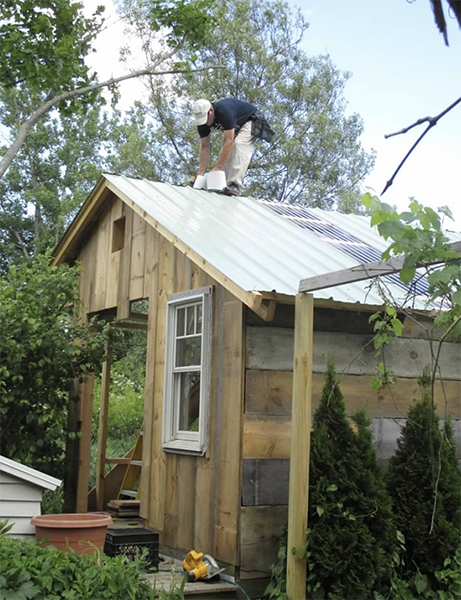What is a Ten Footer and Why do I work in one? PART 1
- Saboteuse Bespoke
- Dec 20, 2022
- 2 min read

Courtesy of the Lynn Museum Archives at the Phillips Library - Lynn Item September 1899.
In 2014, after a year of traveling back and forth 50 miles to Gardner MA to learn bootmaking from Colorado bootmaker Jim Covington, my husband built an 11’ x 14’ shed for me in our backyard. This workspace allowed me more flexibility in working on boots at home (no more working in the basement, yay!) while still being accessible to our three children all the time.
We live just north of Boston Massachusetts, two towns over from Lynn. I had grown up in Lynn, and then just over the line in Swampscott, the tiny town next door, and I had never heard of a “Ten Footer” before 2014.
Lynn, a city of around 90,000 people in 2022, is a former shoe-manufacturing hub located where the Saugus River meets the Atlantic Ocean. Lynn’s shoemaking history in the European tradition dates to the 1630s, and Lynn was the primary American center of innovation and development in mechanized footwear production in the 1800s; it was arguably the global hub in its prime. And all that shoemaking started in Ten Footer Shoe Shops.

The Breed Ten Footer at the Lynn Museum in 2019 and a reporter's sketch of it in 1899, 120 years before
Courtesy of the Lynn Museum Archives at the Phillips Library - Lynn Item September 1899.
Ten Footers were the small vernacular shoemaking workspaces of New England in the early 1800s. Wherever there are people, there is a need for shoes, but what developed in Lynn was a sophisticated system of handmaking shoes in these little wooden structures in collaboration with women's industry in their homes.
Hundreds of thousands of immigrants flocked to the Lynn area in the 19th and 20th centuries drawn primarily by shoemaking. My family was a part of that larger story: my father, a tool and die maker from France, found work at the GE jet engine plant in Lynn in 1980. I had always thought that this was just our own personal story, but we fit a larger pattern of immigration with a century of precedent. We even lived in a Triple Decker (blog post for another time.)
Shoemaking in Lynn was never static. It evolved from migrant shoemaking, to work in homes and Ten Footers, to small 2-story manufacturing centers, to large scale mill buildings, to larger scale factories, to other countries. There were some hold-outs, but the accelerated arc of American mechanized footwear production mostly burnt itself out, and was gone from Lynn when I started building boots by hand in my replica Ten Footer in 2014.
Bootmaking is a quiet, comtemplative practice, whether it was in 1820 or 2020. Working in a Ten Footer has fostered a line of inquiry for me into researching what lessons we can learn from the conditions of bootmaking in those times, in those spaces, in this Place, to bootmaking now, and potential futures to sustain our craft.
More on my relationship to Ten Footers in the next blog post: What is a Ten Footer and Why Do I Work in One? Part 2.



